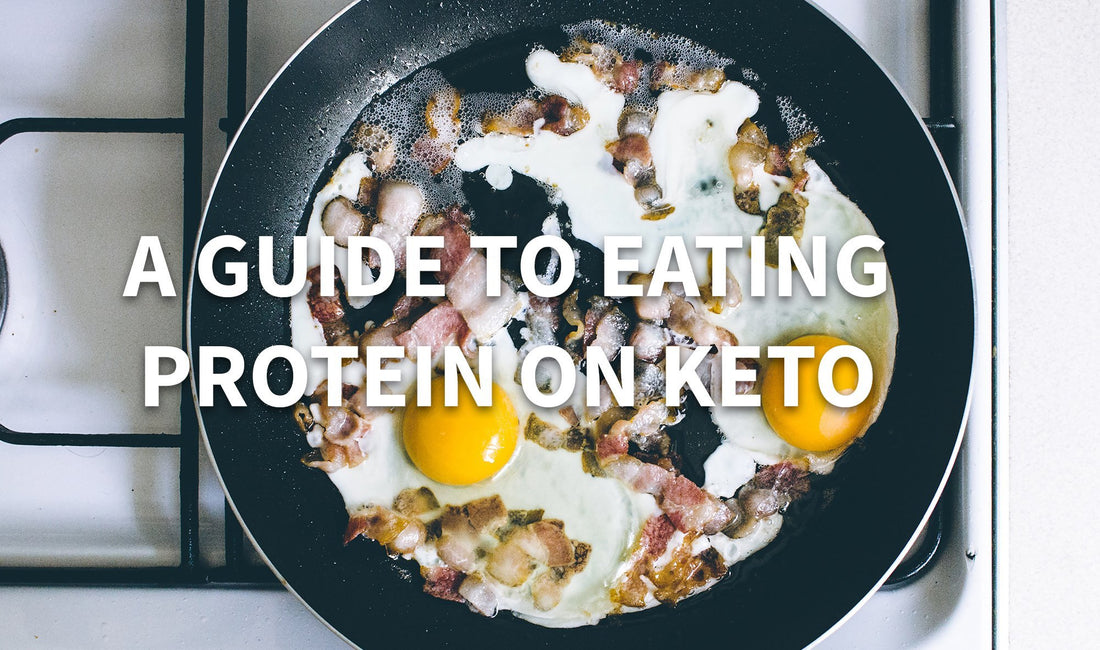
A Guide to Eating Protein On the Keto Diet
Aria PalcichShare
High-fat, low-carb, moderate protein. A great place to start …but maybe not enough information to get started. The truth is ‘moderate’ will mean something different to everyone. While some people will need less protein to maintain ketosis, others can enjoy plenty of healthy keto proteins without ketone levels being throw off. Before we get into that…lets review the basics, what is protein?
What is Protein
If you haven’t heard the term macro yet, consider yourself introduced. Macro’s or ‘macronutrients’ are the three types of nutrients the body needs in large amounts. They are; protein, fat, and carbohydrates. Although most foods will contain all three macro nutrients, each will contain a higher amount of one specific macro. For example, spinach, although more of a carb, does contain some fat and some protein as well. Chicken, although it also contains fats and carbs, mostly consists of protein.
When we refer to proteins, we are generally talking about animal foods such as chicken, beef and pork. All proteins are made up smaller units called amino acids. Animal protein sources contain all of the ‘essential amino acids’ our body needs, and are therefore referred to as "complete proteins". Although vegetables and legumes do contain protein, they do not contain all of the essential amino acids and are referred to as "incomplete proteins". (Essential amino acids are those which the body cannot make and must obtain from food sources. There are a total of 20 amino acids, 9 of which are essential).
Your Protein Macros
As we mentioned, the ideal protein intake while eating keto will differ from person to person. As a general rule, keeping protein to around 1.2 – 1.7 grams per kg of body weight will be appropriate for most people. If you’re having a hard time entering or maintaining optimal ketone levels, and your carbs are already low, it could be that you’re eating too much protein. On the other hand, some people are able to enjoy a lot more protein without having ketone levels affected. The best way to tell how sensitive your body is to protein is to purchase a blood ketone monitor and test how your body reacts to different protein intakes. However, for many people this is not necessary, and simply keeping protein to the above guidelines will help reach ketosis. It all depends what your goals are, and how strict you're keeping track of ketone levels.
There are some cases where a higher protein intake may be necessary. For example, athletes or menopausal women may require a higher protein intake. Do a little research if you think you fall into this category.
Insider Tip: Eating your protein throughout the day rather than all at one meal will help to promote optimal absorption of amino acids! Try to include a little protein in each meal!
Choosing Keto Friendly Protein Sources
While there are many plant-based keto friendly protein sources, we’re going to focus on animal products in the guide. Know that foods like nuts and seeds do contain protein, but also tend to have higher carbs than animal sources of protein.
Not all protein is created equal for keto. By that, we mean some cuts of meat will tend to be more keto friendly than others (aka have higher fat and lower protein counts). Below we’ll outline the best cuts of meat to include on a keto diet. Whenever possible, we recommend choosing meat from local, and sustainable sources. All Ketolibriyum poultry and beef is sourced from local farms that do not use antibiotics or hormones in producing their meat. We also try to source local pork as much as possible.
A note on eggs: Eggs are an amazing source of keto friendly protein! Eating four eggs per day would get you between 20-25 grams of protein. Click here for an easy keto breakfast with eggs!
The Best Cuts of Meat for the Keto Diet
Fattier Cuts
|
PORK |
POULTRY |
LAMB |
BEEF |
SEAFOOD |
|
Pork belly *
|
Legs All dark meat is higher in fat. Keep skin on to raise fat content!
|
Lamb chops
|
Any marbled beef will typically have more fat
|
|
Leaner Cuts
|
PORK |
POULTRY |
BEEF |
SEAFOOD |
|
Ham
|
Breast
|
Beef chuck
|
Cod |
How much of each cut you will need is up to you! Usually about 100 grams of any cut will give you around 20 – 25 grams of protein.
